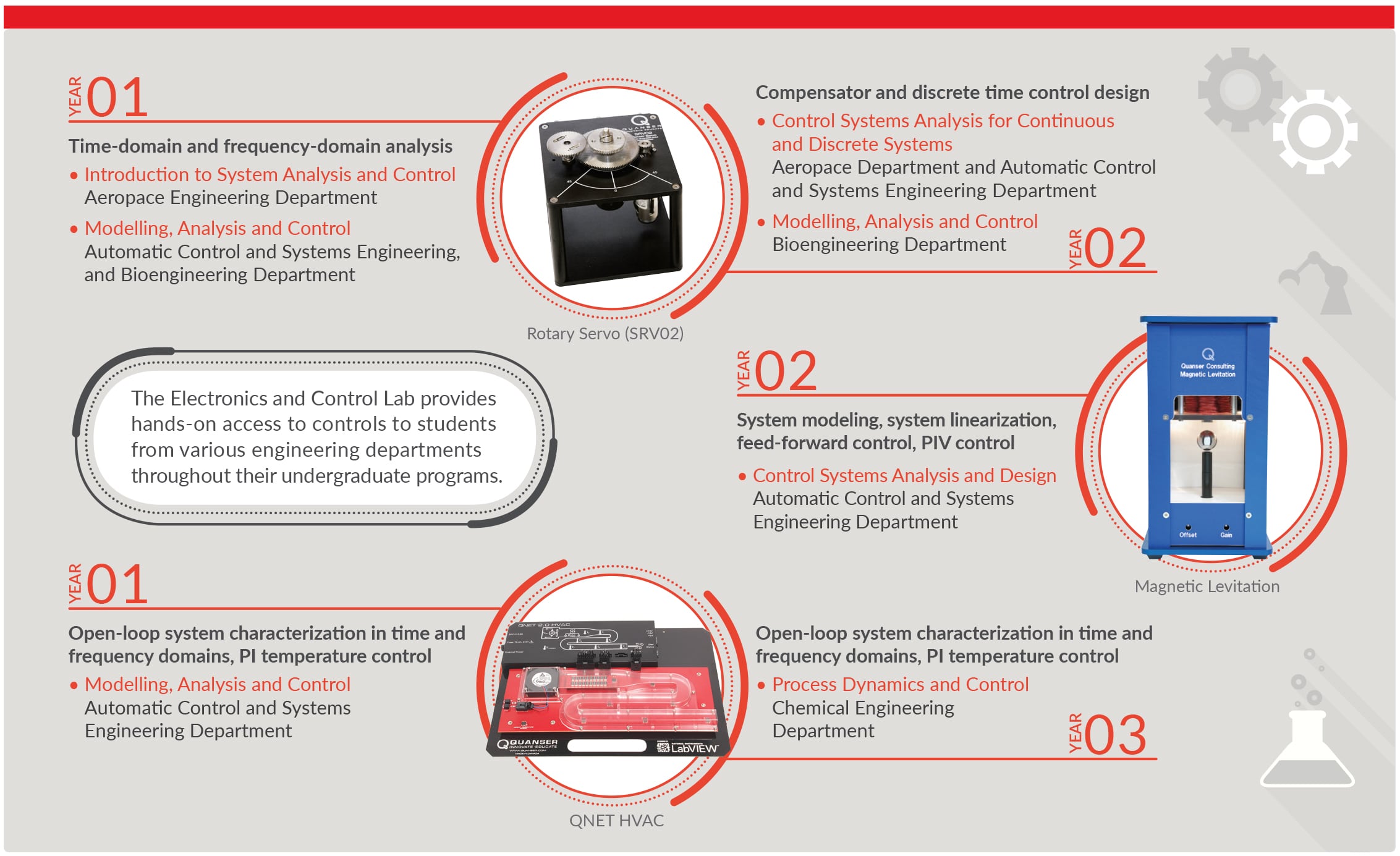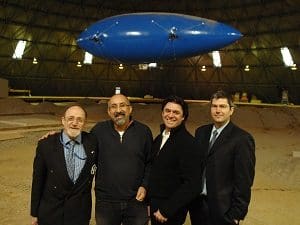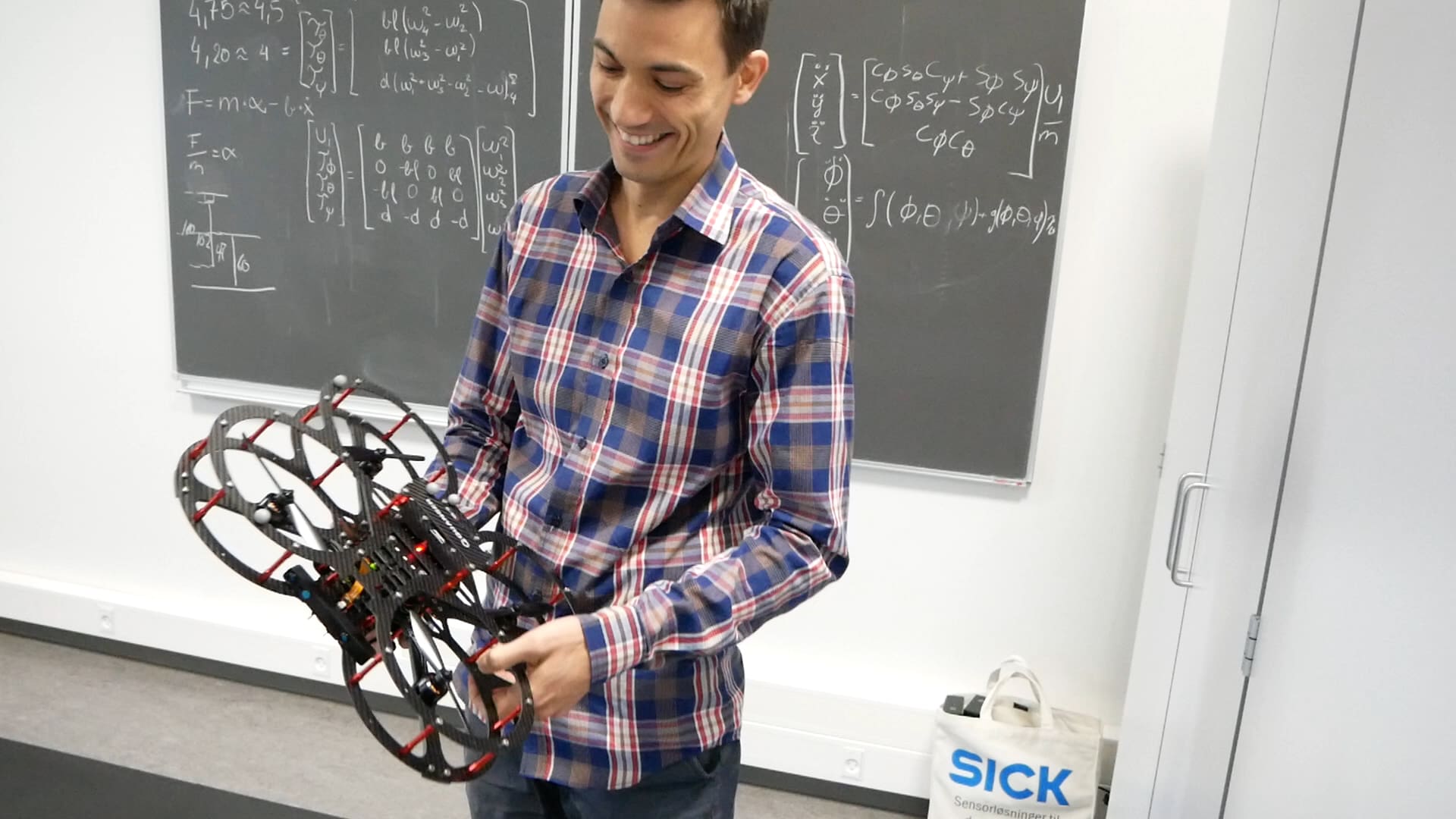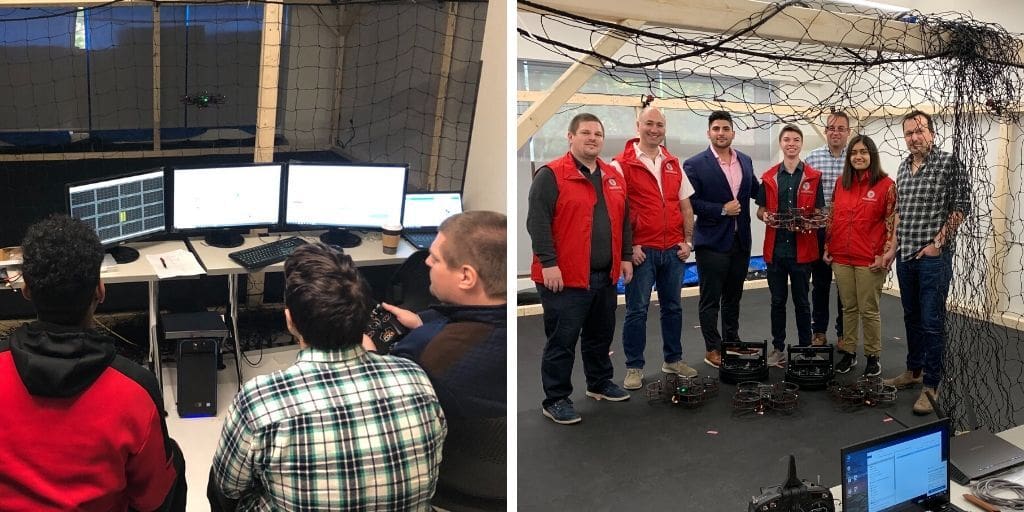
With the projected increase in student numbers, the University of Sheffield made its largest ever investment in education infrastructure. In September 2015, the new multi-disciplinary teaching facility, The Diamond, opened, giving students access to 19 engineering labs, lecture theaters, seminar rooms, learning spaces and much more. With The Diamond, the way undergraduate engineering courses had been taught at the University of Sheffield changed – from the traditional, department specific laboratories to common large-scale teaching labs serving multiple departments. The university also created a new Multidisciplinary Engineering Education group, entirely focused on practical teaching and coordinating all activities at The Diamond. The group was tasked with the design and delivery of laboratory courses for students of all engineering departments.
Challenge
Hands-on Exposure to Controls for All Engineering Students
Traditionally, the Department of Automatic Control and Systems Engineering (ACSE) was the main ‘provider’ of controls-related courses at the University of Sheffield. As one of the largest departments of its kind in Europe, their control laboratory served about 200 undergraduate students every year. While other engineering departments also provided controls courses focusing on topics relevant to their respective engineering fields, they struggled with building well-equipped control labs. The model of department-specific control labs also meant that students often had to work in groups of up to six. Although ACSE collaborated with the other engineering departments in the ‘pre-Diamond’ era, sharing their control lab, it was often difficult to schedule different student groups and ensure the lectures’ learning outcomes were reinforced through the practical lab teaching.
Solution
From Program Specific to Multidisciplinary Teaching
With the creation of the Electronics and Control Lab housed in The Diamond, now close to 300 first-year engineering students, as well as additional second- to fourth-year students get significant practical laboratory experience and hands-on access to controls. The students come from the Automatic Control and Systems Engineering, as well as Aerospace, Mechanical, Chemical Engineering and Bioengineering departments. Based on their specialization and seniority, the controls lab provides them with the tools and skills to achieve the outcomes of their respective courses.
The large investment into modern engineering lab equipment resulted in a lab well-equipped to provide practical controls teaching: the Electronics and Control Lab now offers 144 seats with 72 workstations, enough to allow students to work in small groups. At the same time, the large number of workstations made it easier to schedule the lab work.
Each workstation is equipped with a Quanser Rotary Servo (SRV02) system. The SRV02 is used as a basic plant for the first year controls course lab offered to the Aerospace Engineering, Bioengineering and Control Systems Engineering students. Using this equipment, students focus mostly on the time domain and a frequency domain analysis. The same equipment is then used in their second year, for more complex systems and control topics, such as compensator design, and discrete time control design Moreover, the same experimental plants are used in the Foundations of Control module of the course taught at the postgraduate level.
The lab is also equipped with 45 units of the Quanser QNET HVAC units, the trainer boards for the NI ELVIS platform. These basic first-order systems are used for the first year controls students. From the perspective of the Multidisciplinary Engineering Education group, the QNET HVAC boards demonstrate the temperature lag really well. That makes them an ideal teaching tool for the third-year Chemical and Process Engineering controls course, where students study different control techniques, including open-loop system characterization in time and frequency domains, and PI temperature control.
The Quanser Magnetic Levitation units, representing quite a complex system, are primarily used for teaching the second-year Automatic Control Systems Program course. The practical teaching in the lab covers topic, such as system modeling, system linearization, feed-forward and PIV control. Introducing Controls in a Large-scale Laboratory: A New Approach to Undergraduate Engineering Education University of Sheffield, UK For example, the lab equipment also plays an important role when introducing students to LabVIEW, making the concepts more tangible. The Rotary Servo system, with a DC motor and a sensor, provides students with a visual reference tool and helps them understand how a system responds to an input signal. While the lectures and control design expose students to MATLAB tools, in the practical lab sessions, LabVIEW provides a seamless integration with the actual hardware. Coming to the lab, students use the parameters obtained from their MATLAB trials as inputs to a variety of LabVIEW-based controllers.

Result
Reinforcing Theory with Practical Teaching
Although the large-scale controls lab teaching is still a fairly new concept at the University of Sheffield, the experience from the first few years is positive.
The Electronics and Control Lab provides access to control experiments to all engineering students, regardless their home department. The large number of workstations accommodates all students at the same time, resulting in better alignment of lectures and the practical lab teaching, which means that the lecture theory can be better reinforced through the lab modules. At the same time, students work in pairs or in fairly small groups. While this satisfies the course group working outcome, the small groups also mean that all students get to use and control the equipment, and get the hands-on, practical exposure to controls.
From the faculty perspective, the large-scale lab makes performing laboratory exercises much more efficient. Implementation of flipped classroom and other modern pedagogical concepts ensure students come to the labs well-prepared, with sufficient theoretical background. With that, the lab time can be dedicated to performing actual experiments, focusing on deepening the students’ understanding of theory studied in lectures.
Future Plans
Going forward, the Multidisciplinary Engineering Education Group sees a lot of potential for improving the delivery of the labs at The Diamond. When it comes to control courses, they plan to better integrate the lab teaching into the course structure, working closely with the lecturers and generating the practical content that feeds into the learning outcomes of the course.
The Quanser systems are ideally suited to help reach these goals. With ten add-on modules, the use of the Rotary Servo (SRV02) base can be expanded to experiments of varying complexity, covering a wide range of different topics, disciplines, and courses. The open architecture design of Quanser systems also allows for customization of the hardware to suit any specific needs. At the Electronics and Control Lab, they have already done this, developing an interface board connecting the Quanser SRV02 to the NI ELVIS platform. The customization also extends to the course materials. The lab experiments developed by Quanser engineers helped especially at the beginning when the faculty themselves needed to get familiar with the new systems. Later on,the Multidisciplinary Engineering Education Group developed additional lab experiments to reinforce specific topics covered in lectures. All these result in a flexible lab that could be scaled to the needs of multiple courses, even courses beyond classic control.


